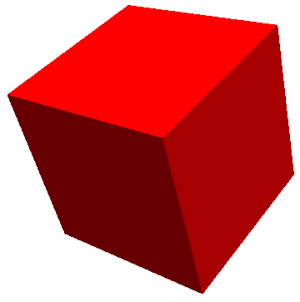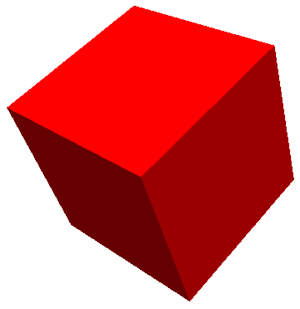Mosely snowflake
The Mosely snowflake (after Jeannine Mosely) is a Sierpiński–Menger type of fractal obtained in two variants either by the operation opposite to creating the Sierpiński-Menger snowflake or Cantor dust i.e. not by leaving but by removing eight of the smaller 1/3-scaled corner cubes and the central one from each cube left from the previous recursion (lighter) or by removing only corner cubes (heavier). [1] In one dimension this operation (i.e. the recursive removal of two side line segments) is trivial and converges only to single point. It resembles the original water snowflake of snow. By the construction the Hausdorff dimension of the lighter snowflake is

Mosley snowflake formation during four recursion steps

Mosley snowflake (heavier) formation during four recursion steps
and the heavier
.
See also
- Jerusalem Cube
- Sierpinski sponge
References
- Eric Baird, Alt.Fractals: A visual guide to fractal geometry and design (January 2011), pages 21 and 62-64. ISBN 9780955706837
- Wertheim, Margaret; Mosely, Jeannine (2011), The Mosely snowflake sponge: construction guide, California : USC Libraries.
This article is issued from Wikipedia. The text is licensed under Creative Commons - Attribution - Sharealike. Additional terms may apply for the media files.